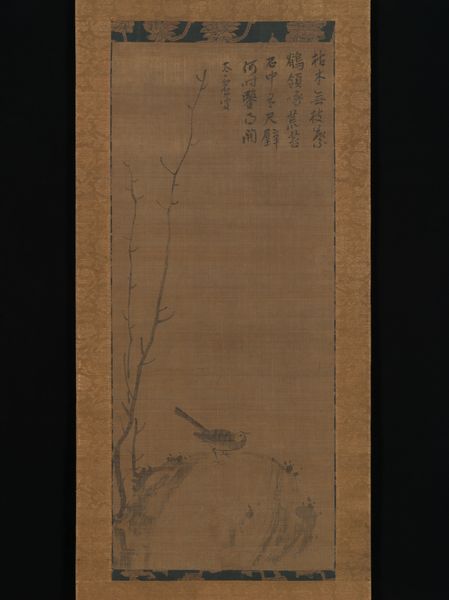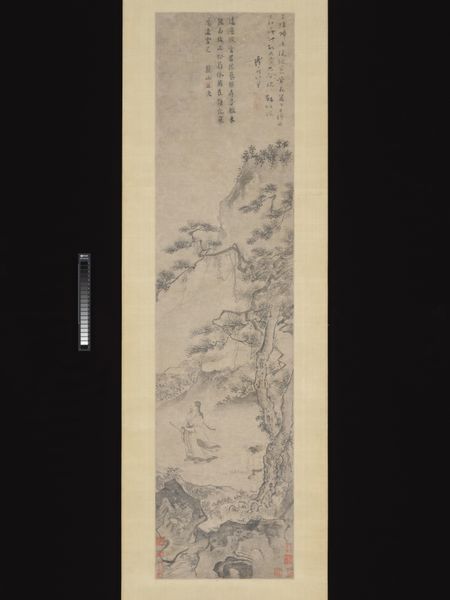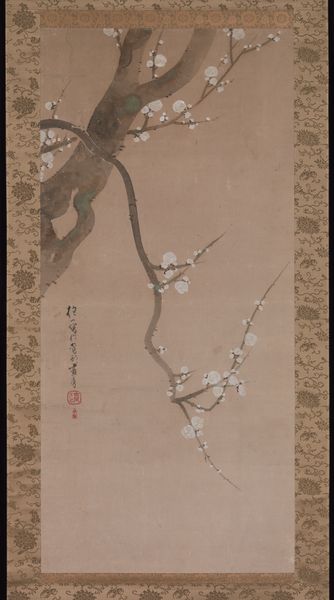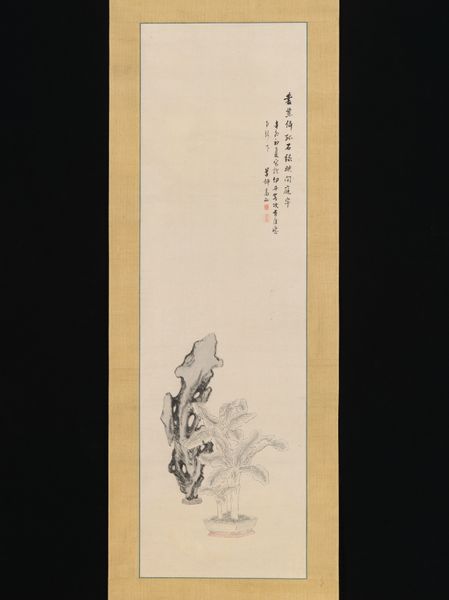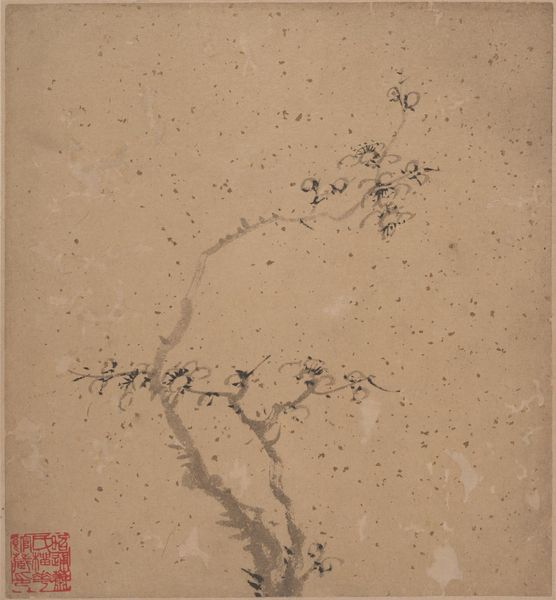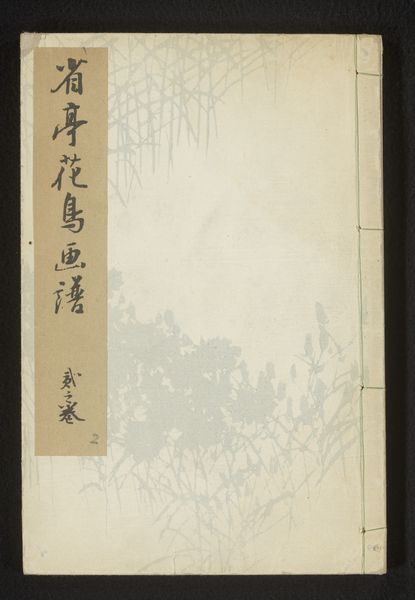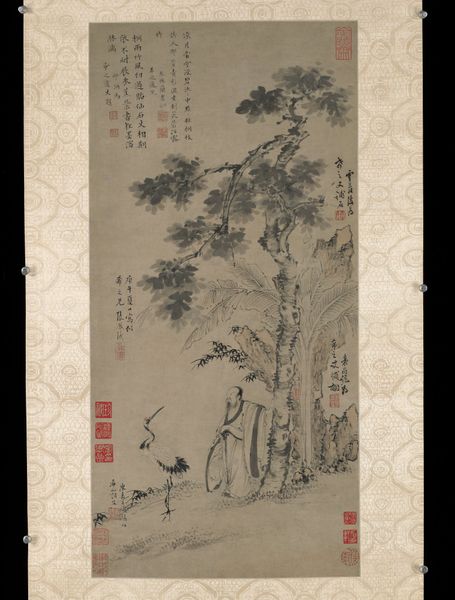
drawing, painting, hanging-scroll, ink
#
drawing
#
painting
#
asian-art
#
landscape
#
ukiyo-e
#
hanging-scroll
#
ink
#
orientalism
Dimensions: 85 1/2 x 19 1/16 in. (217.17 x 48.42 cm) (image)
Copyright: Public Domain
Curator: Here we have an exquisite ink drawing attributed to Zhang Yu, aptly titled "Bird and Flower." It's an 18th-century hanging scroll. Editor: It feels so ethereal! The monochrome palette gives it an almost dreamlike quality. The negative space is vast. It pulls you right in. Curator: The choice of ink and paper, traditionally produced through laborious processes, immediately suggests a link to ancient modes of craft, requiring skilled papermakers, meticulous grinding of inkstones... This wasn't just artmaking; it was a sustained performance of refined craftsmanship. Editor: And those birds! They speak to themes of freedom, springtime, and perhaps even a longing for transcendence. Notice their upward flight, pulling the eye skyward, guided by symbolic gestures that are hallmarks of traditional avian painting in Chinese art. They bring stories to life, reminding me of mythical tales about immortals and their bird messengers. Curator: Absolutely, but let's also consider the labor involved in the composition itself. The careful brushstrokes—how many hours did it take to master the controlled flow of ink needed to create the textures of leaves and feathers? It reflects social norms through access to quality materials. Editor: I agree. Each stroke tells a tale, not just visually but also emotionally. These compositions can be visual poems imbued with coded messages; seasonal change indicating nature's rhythm, small birds carrying metaphors of luck and health… or representing the fragility of life, beautifully presented but also inherently vulnerable. Curator: It also served specific patrons or clients, whose demand influenced its circulation. These pieces often become commodities that signify elite consumption in a very different way than how they’re seen today, divorced from the original economic ecosystem of artistic production. Editor: Right, yet its symbols resonate profoundly. Seeing how cultural values surrounding nature are immortalized in visual shorthand makes art a constant conduit. For a moment, our experience aligns with those viewing it hundreds of years before us, even without explicit instructions or written explanations. Curator: So, beyond just a visual feast, we can understand these works as tangible reminders of artistic and artisanal dedication. This allows us to trace both the material conditions surrounding art production alongside its impact throughout history. Editor: Exactly. In delving deeper into both the materials and hidden visual vocabularies, we understand it at an intuitive level. Now, I view it with even more appreciation than just as an aesthetically pleasant artwork!
Comments
No comments
Be the first to comment and join the conversation on the ultimate creative platform.

